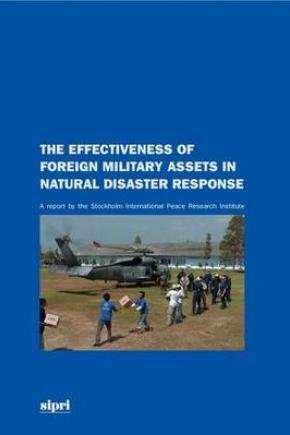The Effectiveness of Foreign Military Assets in Natural Disaster Response

This study examines the advantages, limitations and implications of involving foreign military assets - personnel, equipment and expertise - in the relief operations that follow major natural disasters. It presents the findings of a research project carried out by the Stockholm International Peace Research Institute (SIPRI) with the support of the United Nations Office for the Coordination of Humanitarian Affairs (OCHA).
Foreign military assets have made large contributions to several recent natural disaster relief operations, yet their use in such operations remains controversial. The questions asked range from matters of principle—is it appropriate for foreign forces to take part in humanitarian work?—to more practical considerations such as cost, how effectively foreign military assets can participate in civilian-led humanitarian operations and how the presence of foreign military assets affects the ability of civilian humanitarian organizations to act independently and safely. This study provides an overview of the current use of foreign military assets in natural disaster response, including how and why they are deployed. It also analyses the role played by foreign military assets in several major disaster relief operations: in Mozambique following the floods in 2000, in Haiti following floods and tropical storm Jeanne in 2004, in Aceh province, Indonesia, following the Indian Ocean tsunami of 2004, and in Pakistan-administered Kashmir following the South Asia earthquake of 2005.
Executive summary
Abbreviations
Chapter 1. Background
Chapter 2. A changing landscape for disaster relief assistance
Chapter 3. Overview of the use of foreign military assets: 1997-2006
Chapter 4. The decision to use military assets
Chapter 5. The effectiveness of using foreign military assets in natural disaster response
Chapter 6. Findings and recommendations
Annex A. Case study: Floods and cyclones in Mozambique, 2000
Annex B. Case study: Floods and tropical storm Jeanne, Haiti, 2004
Annex C. Case study: Indian Ocean tsunami, Aceh province, 87 Indonesia, 2004
Annex D. Case study: South Asia earthquake, Pakistan, 2005
Annex E. Lists of respondents
Annex F. Questionnaires used in the study
